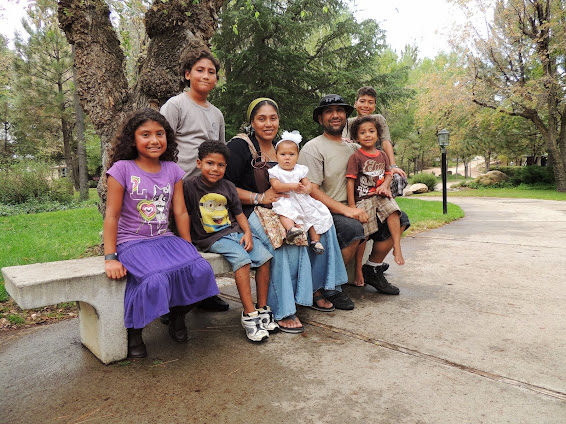THE FIVE STEPS
1) ³You need to stop yourself from doing ___________.² And then give a
reason.
Example: ³You need to stop yourself from walking with scissors. That is
not safe.²
Then, if they don¹t stop, or start doing it again:
2) Get their attention, look them in the eye, and, if necessary, get down
on their level and say, ³Listen to my words, OYou need to stop yourself from
________¹. ³ And tell them what to do instead.
Example: ³Listen to my words, OYou need to stop yourself from walking with
the scissors. Either set them down, or sit down yourself and use them at
the table.²
Then, if it continues:
3) ³You are having a hard time stopping yourself. Can you stop yourself,
or do you need my help?² And let your child answer. If they say they need
your help, help them. Remove the scissors from their hand and/or help them
sit down at the table where it is safe to have the scissors. If they say
they can stop themselves, let them try. If they can¹t:
4) ³You¹re having a very hard time stopping yourself. Here, let me help
you.² Then you move in and help the child as stated in step number three.
5) The Bear Hug.
This step is the highest step and is to be used when your child resists
your help or, at any time during the steps if your child becomes
out-of-control. By this I mean they are unable to control themselves and
might hurt either themselves or you. Stand behind your child and put your
arms over their shoulders and crossed over their chest. Your hands can be
used, if necessary, to hold their arms so that no one gets hit. Slight
pressure can be put on the child¹s shoulders to hold their feet down on the
ground so that they cannot kick or try to run away. You are standing behind
your child so while holding them this way you can speak softly into their
ear--rather than yelling in their face while looking down on them. When
this happens, the child usually relaxes into your body and you can feel the
tension leave their body. At the least, they will be more willing to listen
to your instructions.
As you get to know your child you can cut out unnecessary steps and go to
the step you know your child needs. This may mean going from step one to
step four--where you move in to help them. And, as your child grows, you
may only have to use step one, or you may add back in steps that were
skipped when your child was younger. Regardless, it is very important to
always use at least step one.
Crystal
With my spirited children, once I've asked for nice words and they just can't do it, I let it go and try to model nice words myself and give them what they're asking for.Something like, "I see you're too upset to speak more nicely. We'll try again later, because I know you can do it." I've actually found that averting that power struggle at that moment leads to more moments in the future where they just ask nicely the first time. Otherwise, when I push in the moment, it's mainly coming from my own pride and ends up feeling humiliating to them.I guess I just try to put myself in their shoes. I know when I've been crabby inthe past and just said to dh, "Gimme that!" it's a huge act of love just to give it to me and not call me on my mouth right in that moment. Better I should have a chance to apologize on my own (which often happens with my kiddos) than to be pushed in the moment to feel even worse. Redirecting Anger:1) Turn on music and start dancing2) Hand each kid paper and pen3) Fill a sink with water and bubbles and let them clean toys4) Give them play doh to pound.5) Take everyone to a cuddle corner
6) Lead a angry march
No more yelling long distance! Drop what you are doing and walk to wherever they are. Get eye level.
You can raise your voice firmly, but not loudly, to let them know they have overstepped their boundaries.
Be brief. Use 1 word
Don’t phrase commands as requests!
Oct 15, 2004
Unless someone care's

Compassion
Compassion Verse
"Lifehouse Anything Skit"
Our Mighty Arrows
















0 comments:
Post a Comment